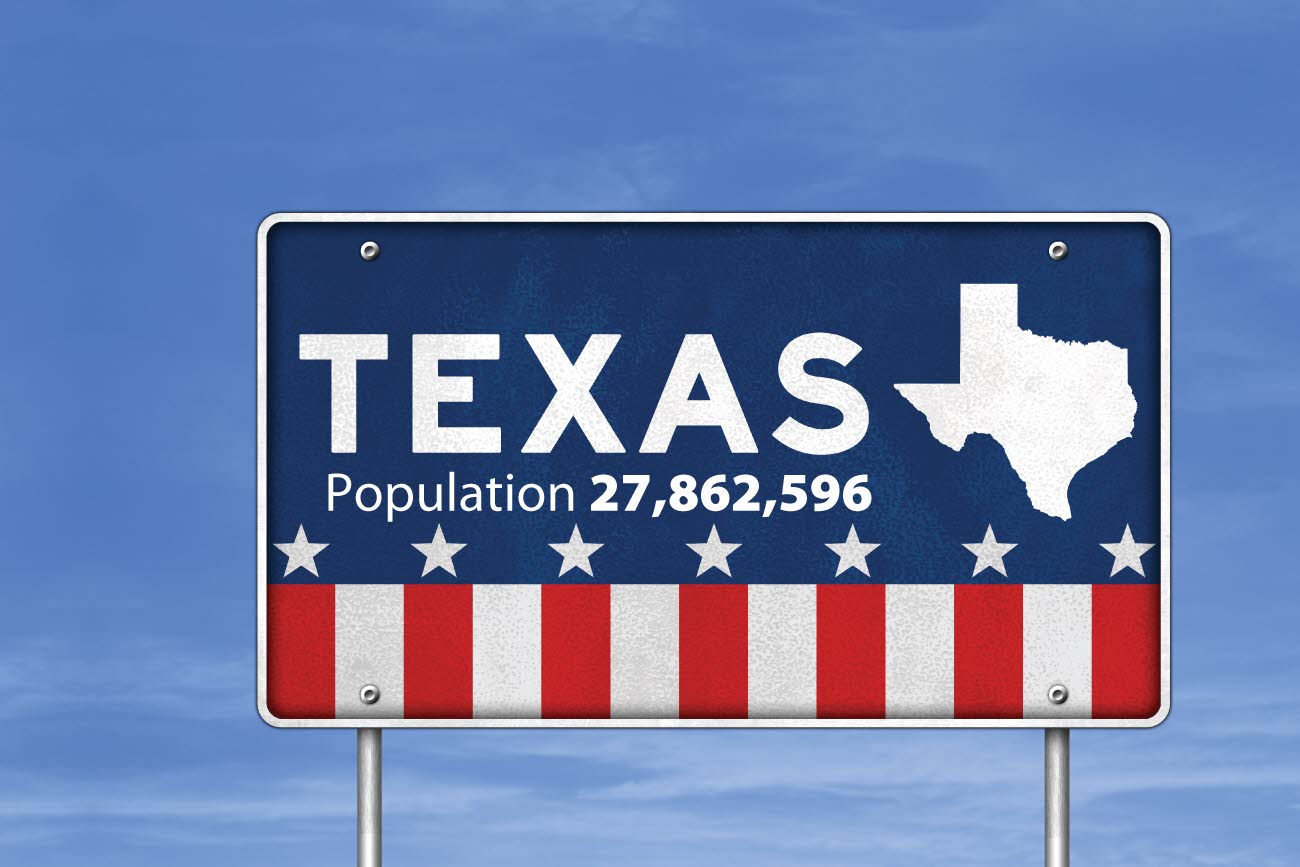
An official website of the United States government
Here’s how you know
Official websites use .gov
A .gov website belongs to an official government organization in the United States.
Secure .gov websites use HTTPS
A lock (
) or https:// means you’ve safely connected to the .gov website. Share sensitive information only on official, secure websites.
-
//
- Census.gov /
- Library /
- America Counts: Stories /
- Texas Has Nation's Largest Annual State Population Growth
Births and Migration Push Population to Nearly 28 Million
Texas continues to have strong population growth in the second decade of the 21st century. This growth is from a robust and balanced combination of natural increase and net migration that pushed the state’s population to almost 28 million.
For each year between 2010 and 2016, Texas has had the nation’s largest annual population growth. During this period, the state added about 211,000 people per year through natural increase.
As for migration, Texas is a primary destination for both domestic and international migrants. Average annual net domestic migration between 2010 and 2016 was close to 140,000 while net international migration averaged around 82,000. The state’s major metropolitan statistical areas (Austin-Round Rock, Dallas-Fort Worth-Arlington, Houston-The Woodlands-Sugar Land, and San Antonio-New Braunfels) are leading areas of population growth in Texas.
While these areas have high rates of natural increase, net migration is the dominant source of population growth in Texas’ metro areas.
“The most likely reasons people relocate to Texas are its resilient economy and relatively affordable housing,” said Lloyd Potter, Texas state demographer at the University of Texas San Antonio. “Oil and gas production continues to be a major component in the state’s economy, but other sectors such as information technology, manufacturing and biomedicine are important sources of job growth.”
Economic expansion in Texas began to slow when oil prices dropped in 2014. This slowdown coincided with 2015-2016 reductions in the sizes of both natural increase and net migration. This was especially evident in the Houston-The Woodlands-Sugar Land metro area. Nonetheless, the 2015-2016 state population still grew by over 430,000.
Texas has a relatively young population and this contributes to a relatively high crude birth rate. Consequently, it is likely that the state will continue to experience strong growth from natural increase into the near future. Migration recently has slowed but remains strong in spite of a slowdown in employment growth. It is likely, then, that population growth from migration also will continue into the near future, though perhaps at a slower pace.
“The most recent estimates from the U.S. Census Bureau indicate a continuation of recent trends,” Potter said. “These trends will lead to increasing population concentration in the state’s major metropolitan areas.”
The growth will come from both natural increase and net migration. Recent international migration data show that Texas immigrants are becoming more heterogeneous, arriving from a greater variety of nations than in the past.
“We have observed a greater share of the state’s immigrants originating from Asian countries and a decreasing share from Latin American countries, especially Mexico,” Potter said. “With this, migration will not only increase the size of the state’s metro areas but also will lead to greater population diversity in these areas.”
To learn more about the Texas State Data Center, please visit their website. For more state population trends, visit our State Data Center page.
Share
 Yes
Yes
 No
NoComments or suggestions?


Top

